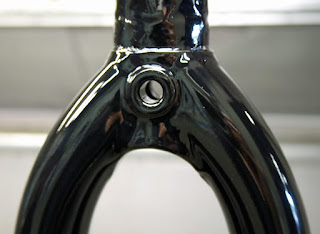The past ten days have been a roller-coaster ride of highs n’ lows; my illustrator, Michael J
Murphy has brought the main characters in my series of children’s stories
alive as Jpegs.
Given digital media dominates and portable devices have become
the viewing tools of choice; we’re considering releasing a narrated version for younger children.
In keeping with our everyday focus at Seven Day Cyclist (www.sevendaycyclist.com https://www.facebook.com/Sevendaycyclistmagazine/?ref=aymt_homepage_panel ), we’re awaiting
delivery of an interesting trailer or two.
Some of the team are leaving their wives behind and heading off for a
quick gander at the Czech Republic...
My strange and some would say; irrational love of crumbling Soviet
military/industrial sites, coupled with an uncanny ability to get arrested,
detained and interrogated by the authorities means I’ll be testing kit on
domestic soil through June…
A recent dry spell enabled me to slather some of my home brewed waxy
preserve over the KA’s chassis and underside.
Build quality seems an
improvement over its predecessors, suggesting there’s some truth in the long
held belief that last-of-the line cars were the ones to go for, since all the
faults had been ironed out. That said; rust behind the filler cap remains as
problematic as ever.
Moisture gets trapped between the rubberised seal and bodywork. A
distinct lack of galvanising means the elements nibble away unsupervised until
the bubbling becomes apparent. Thankfully, remedial action wasn’t too
intensive.
Having removed any flaking paint, I sanded the affected area; then
added two light coats of Krust; a water-based neutralising agent before turning
my attentions to my two-wheeled fleet while it cured.
Some minor play had crept back into the Holdsworth’s headset bearings,
swiftly cured by a quick bit of spacer shuffling and introducing a 2mm “carbon”
unit beneath the stem cap.
Forty miles hence, suggests this unexpected flash of
inspiration has solved the problem.
WD40 water displacer is one of those truly
iconic products; look in any household cupboard, garage, bike shop and chances are, you’ll
find the blue aerosol (or 5 litre solution) sitting on a shelf/workbench.It’s not particularly kind to seals and other rubberised parts but
inhibits corrosion, prevents squeaks, lubricates cables, pivot points,
mechanisms etc.
GT85 is another justly popular, Teflon fortified maintenance
spray, which keeps these areas slicker for longer. It’s also owned by WD40 and
they’ve also launched a bike specific GT85 range including bike wash, dry lube,
degreaser and silicone polish.
While my preference (and that of many bicycle/motorcycle dealerships)
errs towards high quality beeswax furniture polishes; dirt cheap, they achieve
high quality, lasting sheens on painted, plated and polished surfaces with
minimal effort. Silicone products also nourish plastics and rubberised components-suspension
elastomers, seals being obvious candidates.
Traditionally, silicone based polishes-bike specific, or otherwise have
tended to quickly cultivate grimy patinas. Credit where it’s due, while this
formula still seduces some filmy grime, it is easily dismissed (almost as
quickly as these U-locks) given a quick, soft-cloth onceover, though the lion’s
share of protectant remains. Looking forward to putting the rest of their range
through its paces...
John Moss is another perpetual fettler, perhaps unsurprising given his
engineering career. In common with coach-builders and other engineering grade
trades I’ve encountered in the past, he’s been trained to discover weaknesses
and improve designs accordingly. His Mango being a prime example; Alfine 11sped
hub, much bigger ring instated, gearing now permits 35mph at modest cadences
and theoretically in excess of 80mph on a long descent!
Richard Ballantine once suggested that having motorcycle experience can
be very beneficial when pushing recumbents hard-I was somewhat smitten with his
“Speedy” during this period and would certainly indulge today...Along with some
kind of 850cc trike project if other priorities and space permitted.
John affirmed that his ten years spent riding large capacity motorcycles
develops an intuitive understanding of exactly when to push and of course, to
back off. He’s also learning to work
with glass fibre and appears to have commandeered the couple’s trailer for solo
shopping runs and other errands. The hitch is presently undergoing refinement
so it tracks more accurately behind the Mango...
Back to the KA
Next came three light coats of red oxide primer. Ideally a colour coat
would’ve been applied but in my experience, these will keep the region solid
and grot free. Before reinstating the filler cap assembly, introduce some
decent quality, rubber friendly grease to the seal. It won’t cure the problem
but greatly inhibits further bouts of grot and therefore, more intensive
exorcism.
If you’ve bought a late model MK1 with no signs of corrosion in this
region, I’d recommend a similar strip-out before filler and more serious
intervention’s needed...


























































